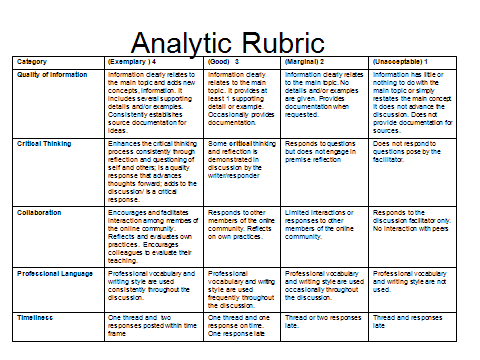
What really stuck out to me this week was the activity we did where we had to match the type of rubric with the two examples because I thought that I was confident and knew all the different types and that really made me know that I really did not know the different types. I am glad that we did that activity though because it really opened my eyes and let me know that I really want to make sure I have analytic rubrics for all my assignments. When I have my own classroom I really want all my rubrics to be very clear so that the children and any other adult would be able to understand it and work from them. I also like that we talked more about the time sampling rubrics because I hope to be a special education teacher and I will be using the time sampling to keep track of the times they do things.

Hi Maddie! I love that you incorporated two pictures in your post! I also agree that the assignment opened my eyes and made me realize analytic is so much better. Give the students more opportunities to succeed!
ReplyDeleteI am going to be a special education teacher as well, and I think event sampling will be very useful in the classroom. Being able to break down a behavior and find the cause of it, can be helpful.
ReplyDelete